Navigate Home Plumbing Challenges with Tips From Fast Plumber
Home plumbing might initially seem like a daunting challenge, but the truth is, with a little guidance and dedication, a lot can be accomplished by the ambitious DIY enthusiast. Imagine being able to promptly address that annoying dripping tap or the suddenly blocked sink, giving you not only peace of mind but also a palpable sense of achievement.
Regular maintenance and timely interventions can prolong the life of your plumbing, ensuring a hassle-free experience. However, while the realm of DIY offers a world of possibilities, it's equally crucial to recognise the scenarios where a professional touch becomes indispensable. That’s where the expertise of Fast Plumber shines through.
This guide will provide invaluable insights into home plumbing, offering tips and advice for various challenges, all the while emphasising the pivotal moments when seeking professional help is paramount. Whether you’re looking to understand the nuances of plumbing or tackle common issues, we are here to support and guide you every step of the way.
DIY Home Plumbing Basics Every Homeowner Should Know
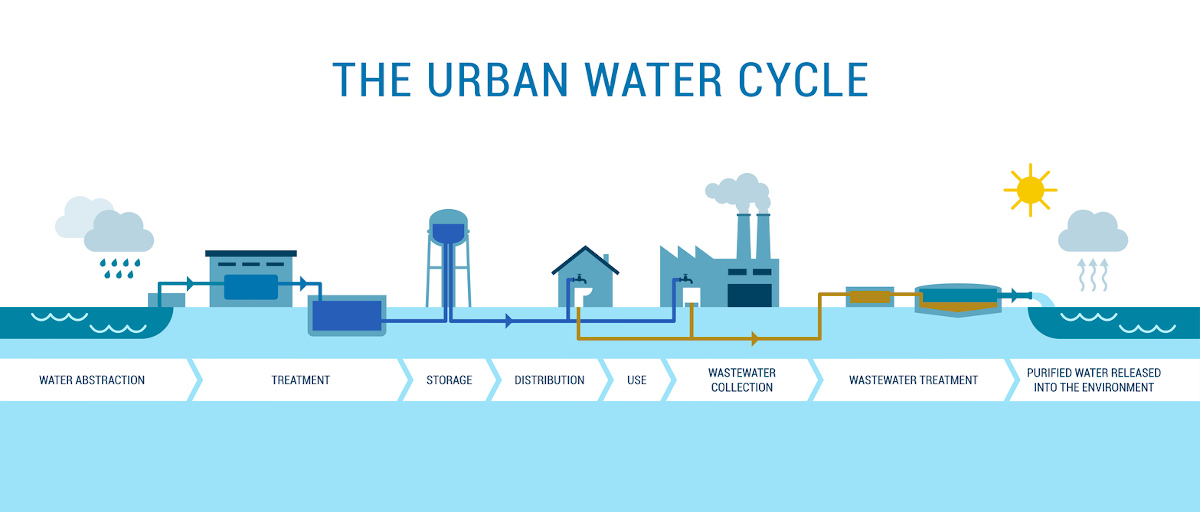
For homeowners, understanding the intricacies of DIY home plumbing can lead to significant savings and help preempt potential issues. Ever found yourself fixing dripping pipes and then pondered, "how does water get to my house?" The diagram below provides insight.
The diagram below traces water's journey, starting from extraction and moving through stages like treatment, storage, distribution, and use in our homes. It also details wastewater collection, treatment, and the final release of purified water back into the environment. With this comprehensive "how does water get to my house diagram," you'll be better equipped to address minor plumbing concerns and understand the broader context of water's journey.
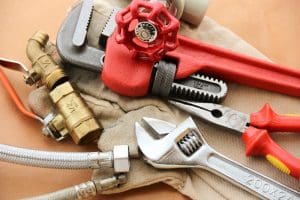
Here are some fundamentals:
- Understand the Plumbing Layout: Before starting, it's essential to know how to plumb a bathroom properly. Familiarising yourself with the correct procedures can help prevent accidental water line break mishaps.
- Essential Tools: A wrench, plunger, and plumber's tape are a few basic tools that can help sort out minor issues.
- Safety First: Always remember to turn off the main water supply when dealing with any plumbing task. This minimises the risk of flooding and potential water damage.
From unclogging a drain using simple kitchen ingredients to addressing garbage disposal problems, there are tasks homeowners can comfortably handle. However, the key is recognising when a situation is beyond DIY.
For example, more complex scenarios involving water pressure issues or when you spot damage in the main lines require expert intervention. This is where Fast Plumber comes into play. It's essential to understand that while DIY can be beneficial, the expertise of a professional ensures no further damage is done.
Consider these statistics:
- According to a study by the Australian Institute of Plumbing, 72% of homeowners called in a plumber in the past year.
- The Master Plumbers Association of Australia found that 58% of homeowners experienced property damage from a DIY plumbing repair.
- A notable 65% of homeowners believe that hiring a professional plumber is more cost-effective than attempting DIY solutions.
These numbers underscore the importance of recognising when it's time to call in the pros. Remember, it's always more cost-effective to get it right the first time. When in doubt, it's best to ring us up!
Causes and DIY Fixes for Blocked Toilet
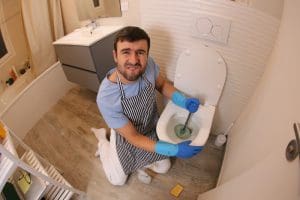
One of the most daunting challenges any homeowner can face is dealing with a blocked toilet, especially during those early morning hours when the entire house is gearing up for the day or during those late-night routines. The reasons for these blockages can vary: an excess of toilet paper, foreign objects like kids' toys, or more stubborn obstructions.
While there are DIY toilet repairs that homeowners can execute to address these issues, it's crucial to exercise caution:
- Plunging: A good seal with a plunger and vigorous action can sometimes dislodge the obstruction.
- Natural Solutions: Instead of harsh chemicals that might damage your pipes, a mixture of baking soda followed by vinegar can be effective.
- Manual Removal: Using gloves, sometimes you can physically remove the blockage.
However, before diving into the world of DIY toilet repair, it's essential to be aware of the tools and procedures involved. Fast Plumber’s plumbing blog is a great resource when tackling DIY plumbing and will also let you explore more about the services we offer at Fast Plumber. Here, we delve into aspects like the importance of the right wrench, the need for a proper toilet repair kit, and the meticulous steps involved in addressing leaks.
Yet, while the DIY route can be tempting, not all blocked toilets are simple fixes. There are times when the expertise of a professional is paramount to prevent further damage and potential costs. This is where our dedicated team at Fast Plumber steps in, offering reliable 24/7 emergency plumbing services.
If you're ever unsure about a DIY fix, remember, our seasoned professionals are just a call away, equipped to handle any plumbing challenge, be it a blocked toilet or more. We pride ourselves on our swift response and dedication, as reflected in the 10,000+ jobs we've tackled in Melbourne by 2022. Whether it's a minor fix or a complex plumbing issue, always know that Fast Plumber has your back.
What to Do with a Running Toilet and How to Stop It
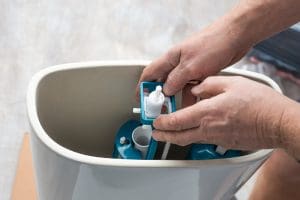
A running toilet is more than just an annoying background noise; it's a wastage of water and a sign that some part of your toilet's mechanism isn't functioning correctly. So, what typically causes a toilet to keep running?
- Worn or Damaged Flapper Valve: This rubber piece can deteriorate over time, leading to water leaks from the tank to the bowl.
- Leaky Fill Valve: If this valve doesn't close properly after filling, water continues to flow.
- Broken Flush Valve Handle: This can keep the water running since it fails to reset the flush mechanism.
- Misadjusted Float Valve: If set too high, water continuously enters the overflow tube.
- Mineral Deposits or Debris: Over time, your valves can get clogged by mineral deposits or small pieces of debris.
How can you stop a toilet from running? Firstly, open the tank and inspect it. Often, a simple jiggle of the handle or repositioning the float can solve the issue. If the flapper valve looks worn out, consider replacing it. Regularly clean the tank to prevent mineral buildup and ensure smooth functioning. And always remember, if DIY fixes don’t halt the water flow, it might be time to call in experts.
Understanding Water Heater Issues
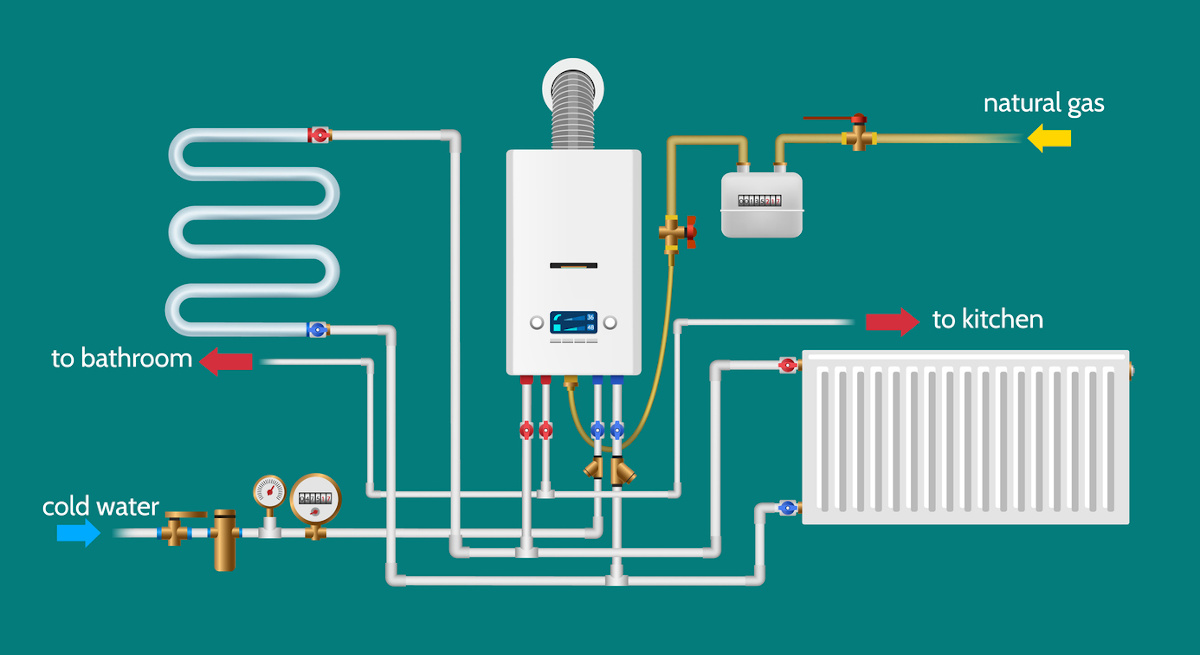
When you turn on the tap and are met with cold water, it's a sign that you may have water heater issues. In many homes, problems with no hot water stem from common water heater malfunctions. Some of the prevalent issues include:
- Leaking: This could be due to a malfunctioning pressure relief valve, a loose connection, or a tank suffering from corrosion.
- No hot water: Often, it's due to power outages, a tripped circuit breaker, a malfunctioning thermostat, or even a damaged heating element.
- Lukewarm water: An undersized heater, a misbehaving thermostat, or sediment buildup can cause this.
- Water is too hot: Generally, this happens when the thermostat is cranked up too high.
- Strange noises: Noisy operations might indicate a faulty heating element or, again, sediment accumulation.
Trying to troubleshoot these problems yourself can be daunting. While services like hot water repairs and hot water service can help, you can also check the benefits of the Victorian government free hot water service while waiting for your water heater issues to get sorted. And if you find yourself with these issues even during wee hours, do not hesitate to Fast Plumber’s 24/7 hot water emergency service.
Common Causes and Solutions for No Hot Water
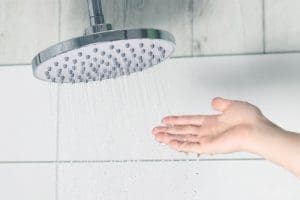
Waking up on a chilly winter morning and discovering there's no hot water can throw off your entire day. Daily routines like showering and dishwashing become seemingly impossible tasks. The reasons for the lack of warmth can range from water heater issues to simpler culprits:
- Heater malfunctions: Sometimes, it’s the unit itself. Elements wear out, or thermostats fail.
- Tripped breakers: If the heater doesn't turn on at all, it might be a simple electrical issue.
For DIY fixes, you can start by checking the circuit breakers or inspecting the thermostat. Regular preventative maintenance can often circumvent these troubles. However, if you’re frequently facing lukewarm water, it might be a sign to consider hot water system replacement or exploring different hot water system brands. With our years of providing high quality plumbing service to south east Melbourne, we at Fast Plumber are specialists when it comes to product knowledge–turn to us for expert advice on which brand to use and install to ensure that the one you pick would last for years to come.
While hot water heaters ensure you never have to face a cold shower, another essential system working behind the scenes during winter is your ducted heating. And when it comes to critical services like ducted heating repairs and ducted heating replacement, it's always safer and more efficient to rely on expertise. Don't let the discomfort of a chilly home or the pain of a cold shower trouble you; trust experts like Fast Plumber to ensure you've got warmth and comfort at all times.
Blocked Shower Drain: Causes, Prevention, and Fixes
The inconvenience of standing in a pool of water while showering because of a blocked shower drain is a problem we've all faced. Often, the causes of this are daily-use items and residues. Let's delve into what typically leads to these blockages:
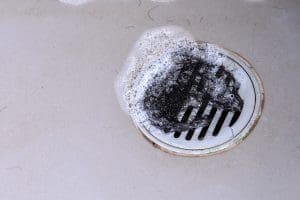
• Natural Debris: Dirt and hair, combining with soap residues, can quickly obstruct the water flow.
• Hair and Soap Residue: As you shower, these elements mix and can bind, creating obstructions over time.
One should be conscious of the seemingly harmless causes, as prevention is better than cure. Regular cleaning and mindful usage can help reduce these instances.
Yet, sometimes, despite our best efforts, blockages can be stubborn. That’s where experts like Fast Plumber, with over two decades of experience in Melbourne's unique plumbing landscape, come into play. Their expertise ensures that blocked shower drains are tackled efficiently, and your shower is back to its optimal state in no time. So, before you spend hours trying DIY methods, remember to consider the convenience of calling in the professionals.
Immediate Actions and Prevention of Burst Pipes
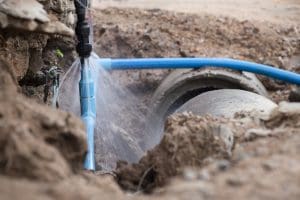
The unexpected event of discovering a burst pipe can evoke a sense of dread and urgency. We've witnessed the chaos it can wreak - from drenched interiors to invaluable belongings compromised. Here's a step-by-step action plan:
- Turn Off the Water: It's imperative! Immediately shut off the main water supply to prevent more destruction.
- Evaluate the Damage: Take a moment to gauge the extent of the damage. Is it localised or widespread?
- Call a Professional: A burst pipe isn't your usual DIY repair. Expert intervention ensures that the issue is thoroughly addressed and prevents recurrence.
- Document Everything: Snap pictures of the damaged areas. It's beneficial for insurance purposes and helps in keeping a record.
- Open Doors & Windows: Promote airflow to speed up the drying process, minimising the risk of mould and mildew.
While pipes can burst for myriad reasons - from drastic temperature changes to wear and tear - routine maintenance is a proactive measure to spot potential issues early. Burst pipes, if overlooked, can pave the way for mould, and structural challenges, and even attract pests. Being vigilant about your home's plumbing integrity, understanding the early signs, and knowing how to respond are pivotal in managing such crises effectively.
How to Fix Low Water Pressure Troubles
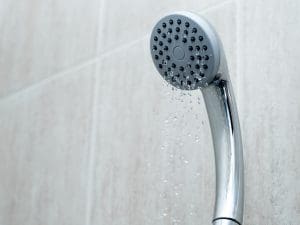
Isn't it frustrating when you are longing for a powerful and relaxing shower, and all you get is a trickle? We've been there, and we understand the annoyance of low water pressure. That relaxing bath you've been dreaming of all day or the swift rinse you need before rushing out can all be hampered. It's more than just a minor inconvenience; it's a disruption to your daily routine. Prolonged issues with water pressure can indicate deeper plumbing concerns that shouldn't be overlooked.
Here are a few steps to consider:
- Check for Leaks: A sneaky leak can be the culprit behind reduced pressure. We recommend inspecting your system thoroughly.
- Clean Faucet Aerators: Over time, these can become clogged with sediment, affecting your water's flow. A regular cleanup can work wonders.
But here's a piece of advice from Fast Plumber: if you're not into plumbing, even these simple tasks can become a headache. Low water pressure might sound trivial, but without the right approach, it could get worse. When you're unsure, it's always best to consult the experts. For our mates in south east Melbourne, we are always ready to help. Our expertise ensures your low water pressure issues are sorted in no time.
Quick DIY Fixes for Clogged Drain and When to Call a Plumber
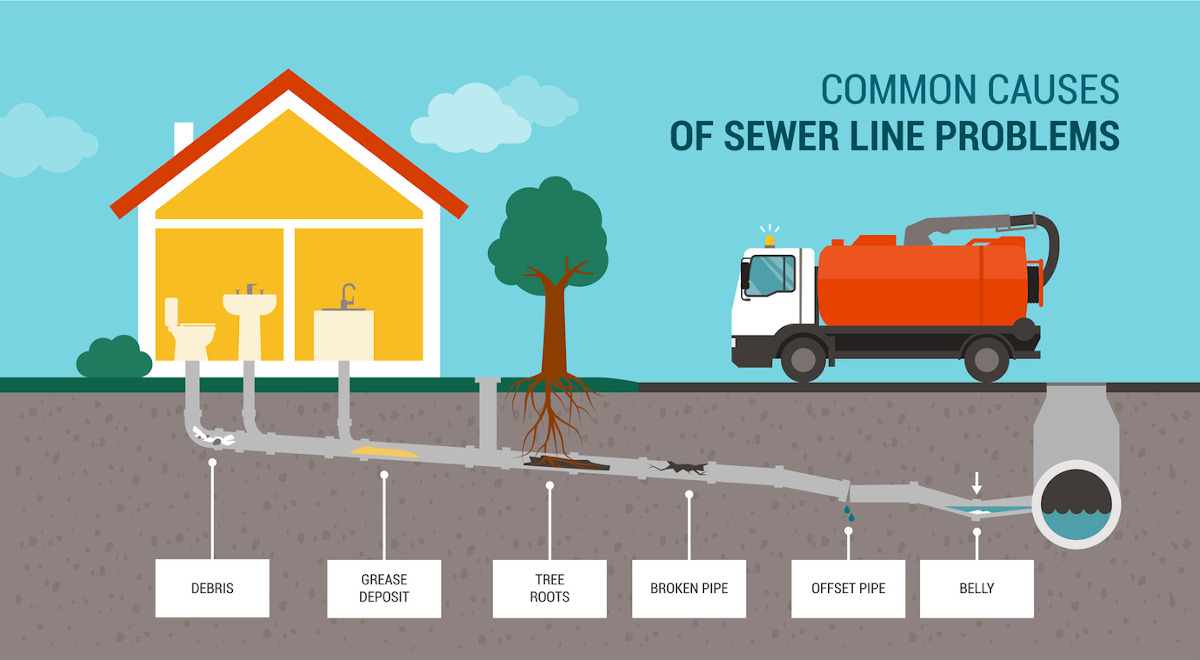
We've all been there - you're trying to wash up after a meal, and you notice the water isn't draining properly. Your heart sinks as you realise you've got a clogged drain. But fear not! While kitchen drains often get blocked by fats, oils, food particles, and even coffee grounds and tea leaves, there are DIY remedies you can try:
- Use a plunger: A good old-fashioned plunge can sometimes dislodge minor blockages.
- Baking Soda and Vinegar: Pour these down the sink, wait, then flush with hot water.
- Boiling Water: Sometimes, just pouring hot water can melt away some blockages.
However, if you're dealing with a blocked toilet or a consistent clogged drain in your kitchen, it might be time to call in the experts. At Fast Plumber, we're equipped with CCTV drain camera inspections to pinpoint the problem, and our team can handle everything from drain excavation to toilet repair. And remember, if you're unsure, it's always best to consult a professional rather than risk worsening the issue.
Solutions for a Slow-Draining Sink
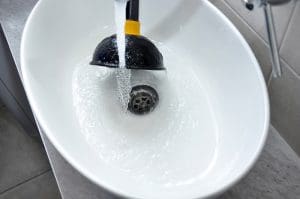
A slow draining sink is often a precursor to a full-blown blockage. Here's what you can do:
- Check the Pop-Up Stopper: Sometimes, the accumulation of hair and debris can cause slowdowns.
- Natural Cleaners: Before reaching for harsh chemicals, try a mixture of baking soda, vinegar, and boiling water.
- Use a Plunger: Ensure you have a tight seal and try plunging a few times.
However, some don'ts include:
- Avoid chemical drain cleaners: They can be harsh on your pipes and the environment.
- Don't ignore the problem: A slow drain can worsen over time.
If you notice consistent issues or your DIY fixes aren't holding up, it might be a sign that parts need replacement or professional cleaning is in order. It's important to call a trusted plumber to assess and ensure your sink returns to optimal performance. After all, you don't want a minor issue to spiral into a major one.
A Step-by-Step Guide to Fixing a Leaky Faucet
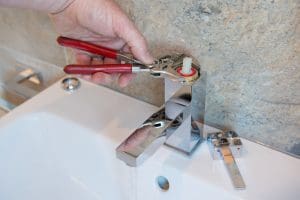
We've all been there - the constant drip-drip of a leaky faucet interrupting the night's silence or causing water wastage that's noticeable on your bills. Here's what you can do:
- Turn off the water supply to the faucet. Always start by cutting off the source.
- Identify the source of the leak. It might be from the spout or the handles.
- Replace any worn or damaged parts. Often, it's a worn-out washer or O-ring.
- Tighten all connections. Sometimes, just securing everything is all that's needed.
- Finally, turn the water back on and check for leaks.
Before fixing a leaking tap, make sure you are aware of the do’s and don'ts. It’s crucial to know when professional intervention is required when addressing a leaky faucet. Remember, while quick fixes can be tempting, it's often more cost-effective in the long run to consult with a local plumber to ensure the issue is resolved once and for all.
Identifying and Managing a Plumbing Leak in Your Home
A plumbing leak, while seemingly inconspicuous, can result in significant home damage and unexpected costs if left unattended. Early detection and management are essential. A routine inspection, especially under sinks, around toilets, and other water fixtures, can highlight potential problems before they escalate. If your water bill suddenly skyrockets, it might not be just because of extra showers or laundry loads; it could be a hidden leak playing the culprit. Spotting a plumbing leak early can save you a lot of trouble and expenses. Here are some steps you can follow:
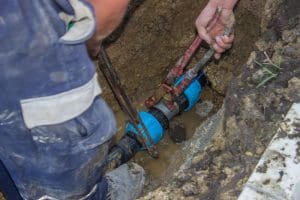
- Regular Inspections: Routinely check under sinks, around toilets, and other plumbing fixtures.
- Monitor Your Water Bill: A sudden spike can indicate a leak.
- Check Your Metre: Turn off all water and watch your metre. If it's still running, you might have a leak.
A plumbing leak can lead to mould, structural damage, and high repair costs. But don't fret. When faced with a plumbing emergency, you can always rely on Fast Plumber 24/7. There's no need to wait or stress - get that plumbing leak fixed anytime with our trusted emergency plumber services.
A Closer Look at Frozen Pipes in South East Melbourne
While Melbourne typically doesn't experience the freezing temperatures that cause frozen pipes, it's not an impossibility. There are times when winters in Melbourne dive from merely cold to truly freezing. For those living in south east Melbourne, this drop in temperature can sometimes lead to the challenge of frozen pipes. More than just a minor inconvenience, frozen pipes are a cause for concern. The freezing process causes water to expand, heightening the risk of a burst pipe. Such incidents can lead to extensive water damage and result in substantial repair costs for homeowners.
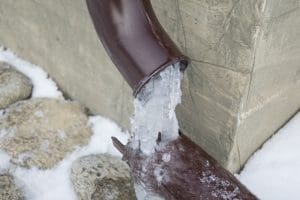
Identifying Frozen Pipes:
- Restricted Water Flow: Turn on your faucets. If only a trickle comes out or nothing at all, your pipes may be frozen.
- Visible Frost: If your pipes are exposed, like those under sinks, you might see frost accumulating on the exterior.
- Cold Temperatures: Pipes are most likely to freeze after many days of very cold temperatures.
- Odd Sounds: Bubbling, clanking, or whistling noises can indicate a blockage caused by ice.
Prevention is Key:
- Insulate: Properly insulate any exposed pipes, especially those in unheated areas.
- Keep the Heat On: Even if you’re away, ensure your home’s temperature doesn’t drop too low.
- Let Faucets Drip: A slight drip can relieve pressure and reduce the risk of burst pipes.
When Pipes Freeze:
- Turn Off the Main Valve: This will prevent flooding if a pipe has burst.
- Warm the Pipes: Use a hairdryer or towels soaked in hot water. Avoid open flames or intense heat sources.
- Open Faucets: As you heat the frozen spot, melted water will begin to flow, helping to melt the remaining ice.
- Seek Professional Help: If you can't locate the frozen section or if the pipe has burst, it's time to call in the experts.
Frozen pipes can be a homeowner's nightmare, especially if you're attempting a DIY fix. In south east Melbourne, where these issues aren't uncommon, the unique challenges demand local expertise. That's where Fast Plumber steps in. With over 20 years of service in the region, we’re not just experienced; we’re experts in local plumbing challenges, including the hassle of frozen pipes. With our deep understanding of the area's intricacies, we're best equipped to provide solutions that last. Rather than dealing with the frustration yourself, trust the experts who’ve been safeguarding Melbourne homes for decades.
Ensure Perfect Home Plumbing Solutions with Fast Plumber
The intricate world of home plumbing, from tackling leaky faucets to managing plumbing leaks and burst pipes, requires a blend of knowledge and finesse. While many homeowners can address basic issues, a professional touch ensures longevity and quality. That's where Fast Plumber steps in. We are dedicated to enhancing and safeguarding the heart of your home's plumbing system. If you're keen to experience stellar home plumbing without the fuss, explore tailored solutions with Fast Plumber today. Here's to a home that functions seamlessly and a peace of mind that lasts.